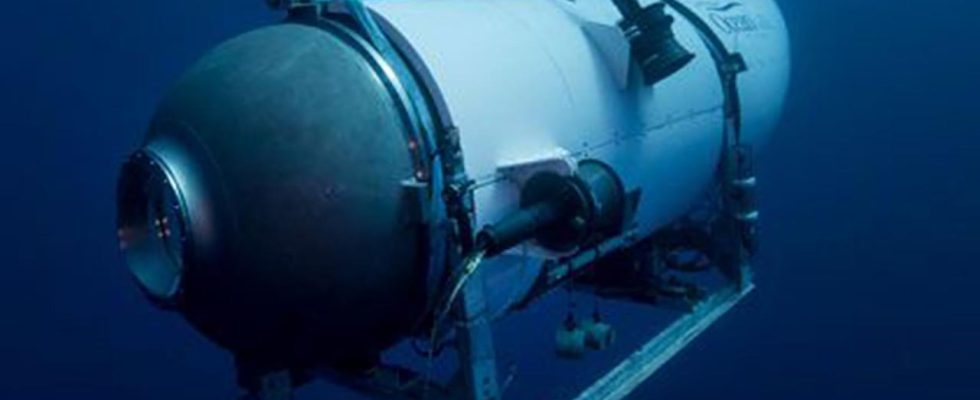Rescuers continue to search for the source of the knocking that could have come from the occupants of the Titan submersible. US Navy experts are expected to help. In the meantime, other rescue ships have arrived in the search area.
Rescue workers continue to search for the Titan submersible with five people on board, which went missing in the Atlantic. According to the US Coast Guard, three special ships have now arrived in the search area, which are equipped with sonars and are now driving search patterns in the suspected accident area. More rescue ships are on their way.
Previously, sonar buoys had registered knocking noises that could be heard every 30 minutes. Whether they are of human origin, i.e. from the occupants of the “Titan”, has not yet been clarified. The head of the US Coast Guard in the north-east of the US, John Mauger, was cautious and referred to US Navy experts. They are able to analyze and classify such noises.
“There are many sources of noise in the ocean”
Theoretically it is possible to localize the approximate position of the noise source using several sonar buoys. However, it is unclear whether this has already been achieved. Nevertheless, the knocking noises were taken as a sign of hope. University of Southampton oceanographer Simon Boxall told the BBC: “There are many sources of noise in the ocean but it gives hope. One scenario that everyone feared was that the submersible basically imploded. So there is hope that it is still a rescue operation and not just a salvage operation.”
On Sunday, the submersible operated by the company OceanGate Expeditions, with a pilot and four guests on board, set off on a tourist dive trip to the wreck of the sunken “Titanic” at a depth of 3800 meters. Contact with the escort ship was lost after almost two hours, and the vehicle has been searched for ever since.
Time for inmates is running out
And time is pressing: According to estimates by the authorities, the oxygen on board the “Titan” should only last until Thursday noon. Even if the submersible is found, recovery could be difficult.
Even experts disagree on how difficult it is. The submarine expert Alistair Greig from University College London pointed out in the BBC that there are not many ships that are technically able to operate at such great depths and lift the submersible. He doubted that a rescue vehicle could attach itself to the hatch of the “Titan”.
Oceanographer Tim Taylor, on the other hand, told the US broadcaster NBC: “Lifting the boat from the bottom is not as difficult or complicated as one might think when it is still intact.”
The German former submarine driver and retired frigate captain, Jürgen Weber, expressed pessimism about being able to find the “Titan” in time. He also referred to fundamental design flaws that the boat had. Among other things, it cannot be opened from the inside: “I don’t get into a submersible that I can’t open from the inside. I think that’s a very serious lack of safety. Even if you’re floating at the top and would like to breathe, you get the boat don’t go up. That’s catastrophic in my eyes.”
Deficiencies were apparently known to the operating company
The shortcomings of the apparently experimental design of the “Titan” should not be new to the company that operates it, OceanGate. The New York Times published a letter that submersible industry executives wrote to OceanGate back in 2018. It states: “We are concerned that OceanGate’s current experimental approach could lead to negative results (ranging from minor to catastrophic).” Previous passengers of the “Titan” also reported that the boat made an improvised impression on them and that breakdowns had also occurred.
OceanGate again pledged to make every effort to rescue the five missing. “All possible steps are being taken to bring the five crew members back safely,” it said in a statement. We are “deeply grateful for the urgent and comprehensive support we are receiving from multiple government agencies and deepwater companies.”

